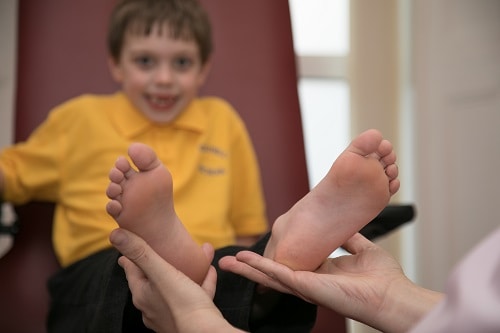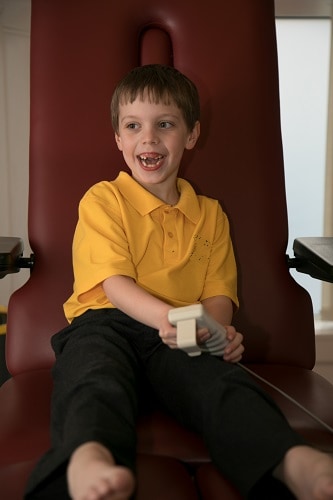Podiatrists’ Top Tips for Children’s Feet
Our Podiatry team have gathered the best of their top tips for children’s feet!
- How often you need to change your child’s shoes depends on the child and their age. On average, children’s feet grow at two sizes per year in the first four years of life and one size per year thereafter until growth is complete.
- However, a child’s foot may not grow for a considerable period of time and then grow several sizes in a relatively short period. To ensure that shoes still fit properly for length and width, a trained shoe fitter should check them every eight weeks. You may do this more frequently if you are aware that they are actively growing in height.
- In general, the main period of accelerated growth in girls is between eight and 13 years with the peak rate at approximately 12 years of age. In boys this is slightly later between 10.5 and 16 years with the peak rate at approximately 14 years. This corresponds with puberty.
- Always have your child’s feet measured for length and width.
- Check the size of their socks.
- If possible, do not put your child in the same shoes every day. Alternate shoes to allow them to dry out, particularly if the foot is sweaty.
- Avoid the use of plimsolls in school all day every day. If a change of footwear is required in school, a fitted pair of lacing trainers is best.
- Children have naturally sweaty feet, but smelly feet may be an indication of poor hygiene.

- Inspect their shoes regularly for unusual wear and seek professional advice if you are concerned. Unusual wear may be the first indication that there is a problem with the foot posture or general posture and should always be investigated by your registered podiatrist. Normally, wear is across the back of the heel or between the back and the outside.You should look out for severe wear on the inside or outside of the heel which may carry forward to the sole of the shoe. The heel area of the upper may also be broken and bulge inside or outside.
- Avoid the use of plimsolls in school all day every day. If a change of footwear is required in school, a fitted pair of lacing trainers is best.
- Be aware that blisters and sores may develop with new shoes.
- Inspect children’s feet regularly for inflamed nails, red pressure marks on the top of the small joints of the toes, below the ankle bones and at the back of the heel.
- Remember that teenagers in particular can be secretive about foot problems and a trivial, easily rectified problem can be more serious if neglected.
- The toenails should be inspected regularly and trimmed as required. A good investment is a pair of nail clippers from your local chemist. Never cut down the side of nails or cut them too short. When cutting, follow the line of the nail at the tip of the toe and always leave the corner of nail just clear of the fleshy part of the toe.
- Wash their feet daily with simple soap and water and dry well, particularly between the toes. After drying, a small amount of talcum powder should be used.
- If they complain of itchy or painful areas or you see any rashes or hard, raised areas on the skin, seek professional advice immediately.

